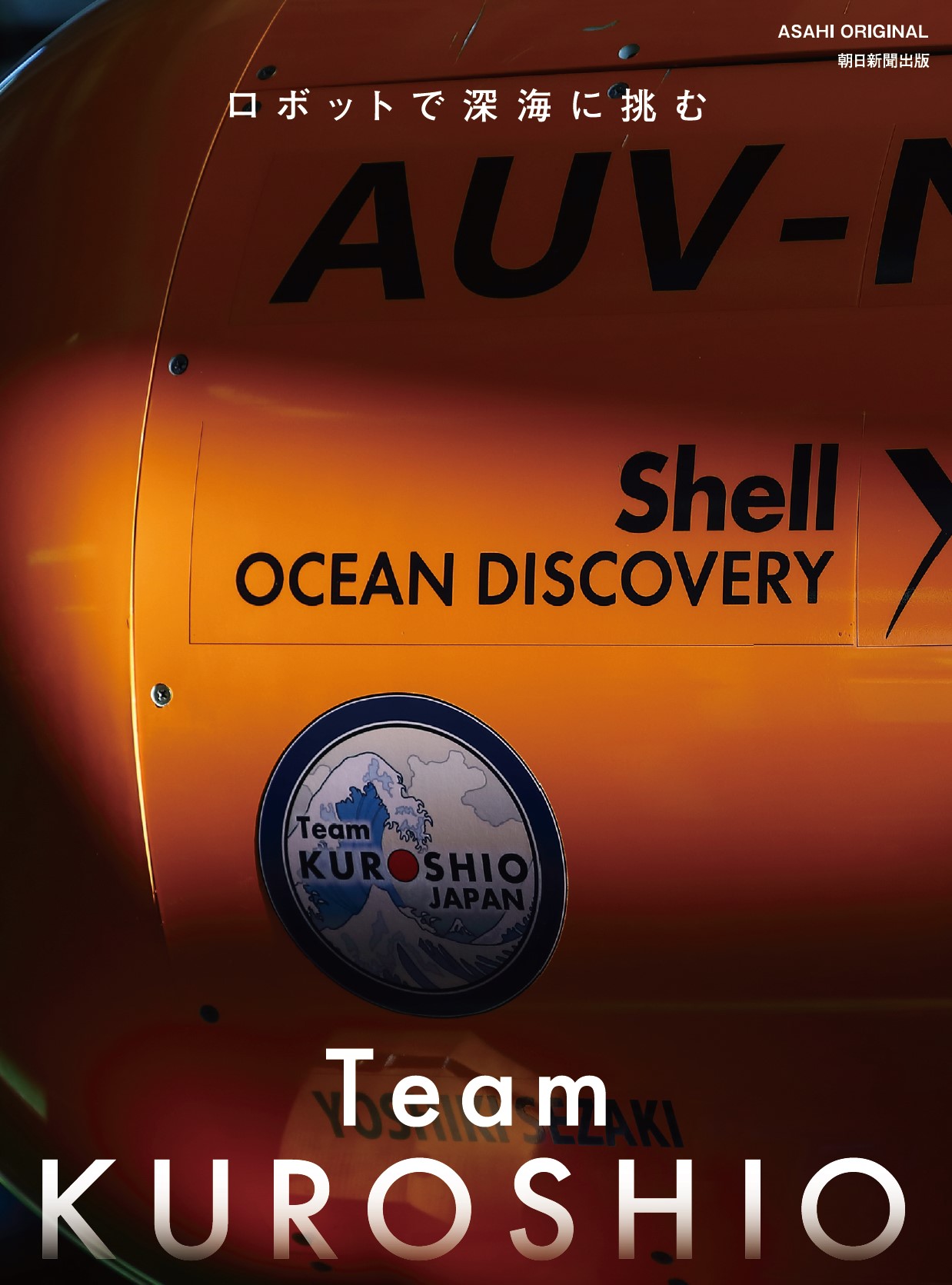
Title
ASAHI ORIGINAL Team KUROSHIO (Challenging the Seabed with Robots)
Size
71 pages
Language
Japanese
Released
October 18, 2019
ISBN
9784022711281
Published by
ASAHI Shimbun Publications Inc.
Book Info
See Book Availability at Library
Japanese Page
This book offers an explosive array of thrilling encounters with underwater robot engineers and the scientists, including seabed geophysics specialists, etc.
Contrary to what one might expect, we still do not know much about the world that lies at our feet. In the modern day, we can now view locations throughout the world using Google Earth, and it seems that there are no locations left to discover through expeditions. However, the fact is that we still lack precise mapping for most of the seabed, which makes up the majority of the planet’s surface. We have maps for approximately 20% of the Earth’s seabed, based on water depth measurements. The majority of the submarine topography displayed by Google Earth is nothing more than values assumed from gravity abnormalities measured by satellites. For precise measurement of topography, usually, people set out on ships and use equipment that, in turn, utilize sound waves (sonar). However, in such efforts, increasing resolution is challenging as there are areas where the distance between the sonar and the seabed runs into kilometers. Additionally, the monetary costs of using ships, as well as the rough waters in high-latitude regions, make going out to sea itself a difficult task. Therefore, the development and usage of AUV (Autonomous Underwater Vehicles) has been gaining attention. These unmanned vehicles are equipped with sensors and piloted to the seabed, where they may explore every nook and cranny.
This book documents the experiences of a Japanese team that took up a challenge in this new field. The US-based XPRIZE Foundation, which hosts large-scale competitions such as the Google Lunar XPRIZE, launched the Shell Ocean Discovery XPRIZE in 2016, featuring a major oil petroleum company as a sponsor. The race to “explore 250 km2 of seabed geographical features at a depth of 4,000 m within 24 hours, via an unmanned craft, and to then draft a topographic map within 48 hours” offered ¥700,000,000 in prize money and saw participation from 32 teams from around the world. Team KUROSHIO, from Japan, included young professionals from the industry, the government, and academia. Many of these members belonged to The University of Tokyo’s Institute of Industrial Science and played key roles in the greater effort. KUROSHIO included robot design specialists, communication and control specialists from each participating company, professional AUV operators, and personnel in charge of data processing and logistics. The teammates, belonging to various fields and areas, spent their days working together on the project for three years. Only five teams from the preliminary round emerged victorious and became eligible to participate in the final round in Greece. Having already overcome various challenges, the Japanese team continued pushing themselves, working through their mistakes. KUROSHIO achieved its initial objective brilliantly and ultimately achieved the runner-up position in the final round. Incidentally, KUROSHIO was one of only two teams that managed to achieve the expedition’s extremely challenging objective. (The winner, an international team, also included a Japanese member, who played a crucial role in the effort.)
This book is assembled with a focus on carefully collected authentic accounts, covering matters ranging from the technology used to the trajectory of events extending from the day of the team’s configuration up to the race itself, as well as interviews with the team members. The provided accounts are interesting, with the members of KUROSHIO discussing their day-to-day experiences. I am truly envious of the people who had the opportunity to interact with the team and gather this information (although I am sure that the rigorous and nonstop work involved in the project must have been stressful for the team members). I believe this work will appeal to engineering enthusiasts and those interested in the human aspect of technological achievements. It is indeed lamentable that there are no female in the main members in the team , but I look forward to their future efforts and to hopefully have a chance to meet them in the future!
(Written by OKINO Kyoko, Professor, Atmosphere and Ocean Research Institute and THORNTON Blair, Associate Professor, Institute of Industrial Science / 2021)



 Find a book
Find a book

